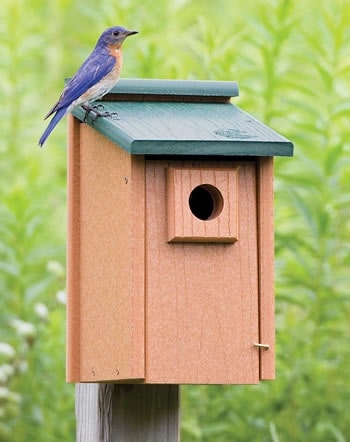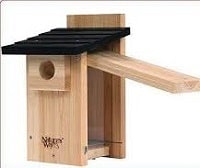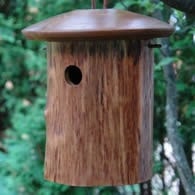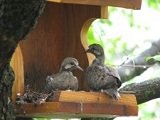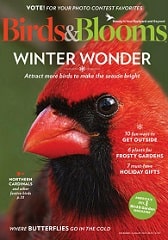Bird Houses - Tips on Choosing, Placing, Cleaning, and Maintaining
Choose the Right Bird House
When it comes to choosing bird houses, whether it's for Bluebirds, Wrens, or Nesting Shelves for Robins, it's important to put some thought into it.
Not all birds nest in man-made boxes, and they certainly aren't all built the same.
So, let's dive into some information that will help you select the best type of birdhouse for the specific bird or birds you want nesting in your backyard.
First things first, nest boxes should be designed and built with a particular type of bird in mind.
I know it might be tempting to go for that cute one with multiple openings, but trust me, it's not the way to go.
Most wild birds prefer to nest away from others of the same species, except for Purple Martins. So, a birdhouse should ideally be designed for a single nest.
Now, unless your goal is simply to decorate your yard or garden, I strongly advise against nesting boxes built for multiple birds like duplexes or triplexes.
These types of houses are unlikely to attract any birds, and in some cases, they may even attract non-native species that can harm the native ones, leading to a decline in their population.
You see, birds can be quite territorial during the breeding season, and the size of their territory varies from species to species.
Unless you happen to live on several acres of land, it's not easy to attract more than one pair of a particular species to your birdhouses.
But don't be discouraged! The goal here is to attract a variety of different bird species to nest in your yard.
To increase your chances of success, I recommend using several nest boxes of different sizes with varying entrance holes.
This will give you the best shot at filling your yard with nesting birds.
Did you know that there are approximately fifty species of North American birds known to be cavity nesters?
Some of the more common ones include the Eastern Bluebird, House Wren, Chickadee, various Woodpecker species, Nuthatch, Purple Martins, and Tree Swallows.
So, there's quite a diverse range of birds you can attract with the right nest boxes.
Now, let's talk about nesting shelves. These can be a great option for attracting birds like American Robins, Barn Swallows, Eastern Phoebes, and Mourning Doves.
Unlike birdhouses, nesting shelves are not fully enclosed boxes. Instead, they usually have a roof, back, bottom, and an open front with narrow side walls.
Entrance Hole and Floor Size Dimensions of Bird Houses
When it comes to the dimensions of birdhouses, the entrance hole plays a crucial role.
Not all entrance holes are created equal. For example, if you're aiming to attract Wrens or Black-capped Chickadees, the entrance hole can be as small as 1 1/8 inch.
This size helps keep House Sparrows out, as you definitely don't want them nesting in your houses. House Sparrows can be harmful to native species, so it's best to avoid them.
On the other hand, Bluebirds and Tree Swallows require an entrance hole that is 1 1/2 inches in diameter.
This size allows House Sparrows access, so you'll need to monitor the nest box closely.
Additionally, floor sizes are also important, as some birds may raise six or more babies.
You can find the recommended sizes for different cavity-nesting birds on our Building Birdhouses page.
When to Clean Bird Houses
Now, let's talk about the cleaning and maintenance of birdhouses.
Just as important as selecting the right house for the right bird is the regular maintenance of the nest box.
If a bird species raises more than one brood a year, like Wrens and Bluebirds do, it's a good idea to clean the house out between broods.
Parasites, blowflies, and other insects can cause harm to future broods.
Some birds won't reuse a nest for a second brood, while others, like the Eastern Bluebird, will use the same birdhouse for up to three broods each season.
When choosing or building a birdhouse, make sure it's easy to clean.
Most quality birdhouses have sides or floors that swing or slide out for easy access.
You definitely don't want a birdhouse that requires disassembling to clean. As for the material, it's best not to paint your birdhouse.
Personally, I prefer nest boxes made from cedar. Cedar weathers to a nice natural silvery gray and blends in with nature.
Dark paint colors can absorb heat, so it's best to avoid them if your birdhouse will be exposed to the sun all day.
Nowadays, many birdhouses are made with recycled materials, which is a great eco-friendly option.
When Should I Hang Bird Houses?
Now, let's talk about where and when to place birdhouses. If possible, try to get your nest boxes up by late summer or early fall.
Birds tend to be attracted to birdhouses that have a more weathered look, so painting them is not recommended.
If you can't get your bird houses up by fall, aim to do it as early as possible in the winter.
Don't wait until you see birds in your yard before mounting or hanging your nest boxes.
Just get them up and ready. Even if you don't attract any birds this year, your birdhouse will have time to weather and be ready for them next season.
Should Birdhouses Be in the Shade?
If you're wondering whether birdhouses should be in the shade, here's what you need to know.
Having some afternoon shade is beneficial, but dense shade is not recommended. Most birds prefer a sunny open space with some afternoon shade.
It's also important to avoid mounting birdhouses on the sides of trees where squirrels, snakes, cats, and raccoons can easily access them.
While it's impossible to guarantee that predators won't reach your nesting birds, there are steps you can take to minimize the risk.
Consider mounting your nest boxes on posts or poles, using squirrel baffles to deter squirrels, instead of hanging birdhouses from tree limbs for House Wrens.
For Bluebird homes, they should be placed on a post about 5-6 feet off the ground, with predator guards around the opening to prevent raccoons from reaching inside.
You can also wrap bird or deer netting around the post to protect against snakes climbing up.
Grease will not work at all. A baffle above the netting at 4 feet will keep critters from climbing and should be used with the netting. A baffle will not stop snakes. (snakes are some of the best climbers)
Nesting Shelves which will attract Robins, Mourning doves, and Phoebes to nest, should be placed under overhangs and eaves.
Lastly, always monitor your birdhouses for undesirable birds and protect them from predators.
By taking these precautions, you'll create a welcoming environment for a variety of bird species to nest in your yard.
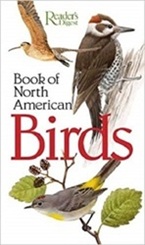
|
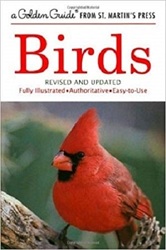
|
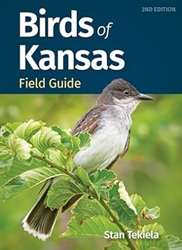
|
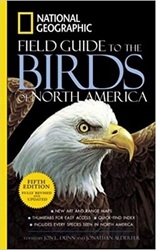
|
| Readers Digest Guide | Golden Guide | Your State Only | Nat-Geo Guide |
